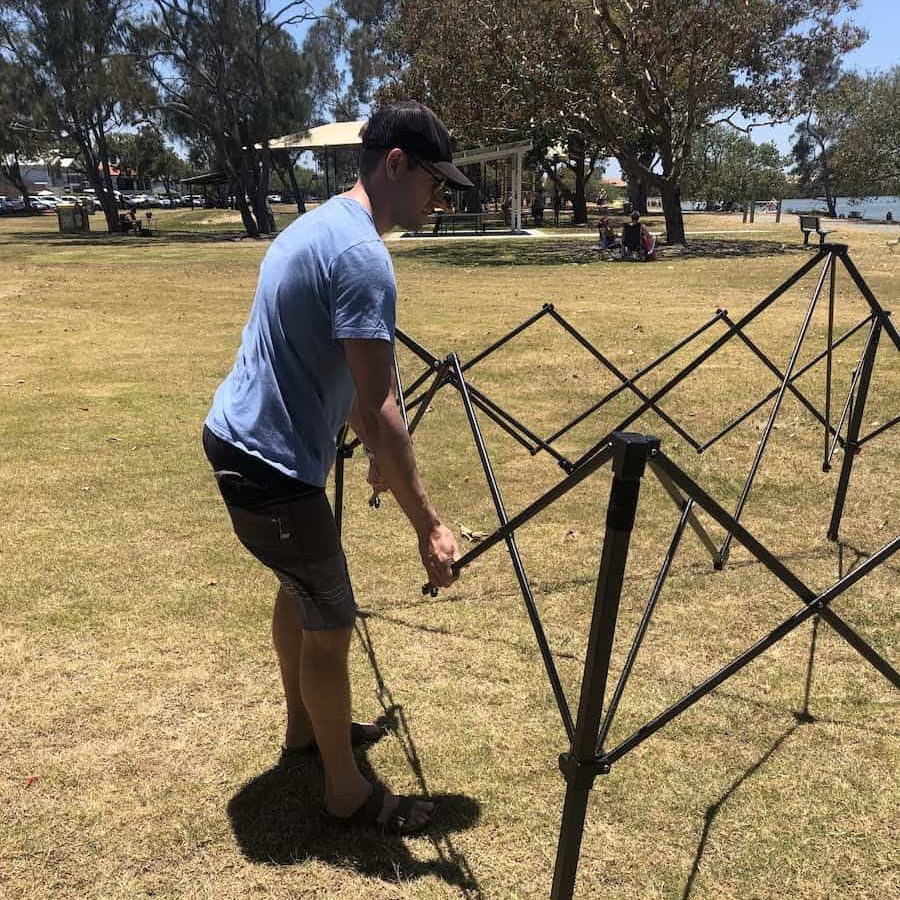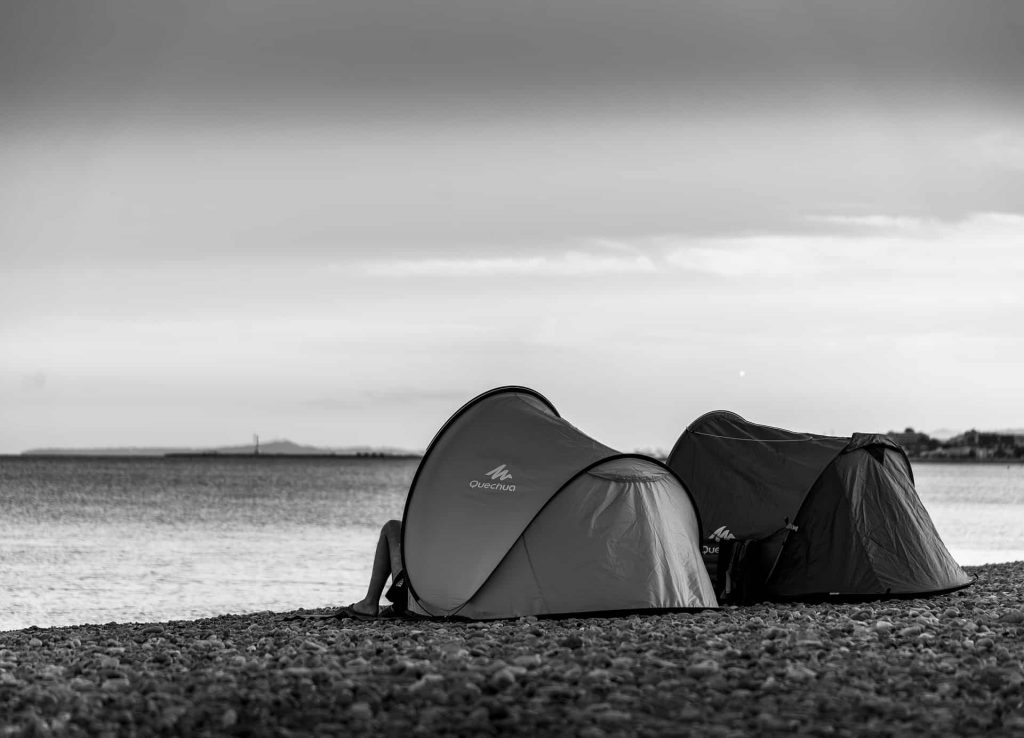When I first started my research into canopies and tents, I noticed that people did not always have the same answer to ‘what is a pop up tent’? The term pop up tent generally refers to any tent that you can setup quickly without much messing around. This can range from small springy shelters that ‘pop’ into shape when you open them; all the way up to collapsible metal framed canopy tents. This article will give you an overview of the different types of pop up tents, and which one will be better suited to your needs.
Pop up tents for different purposes
The term ‘pop up tent’ is a very broad term that is inconsistently used. There are three broad types that you’ll see in the marketplace, which are designed for different purposes: simple pop up tents, mechanised pop up tents, and pop up canopy tents. For more examples and product reviews, click over to my best beach canopy for family trips article.
1. Simple Pop Up Tents
This is the form of pop up tent that you pull out of the bag, and it springs open into a tent shape all by itself (or with gentle coaxing). Instead of thick tent poles that you need to insert, they generally have very thin fibreglass rods that can bend but still provide some structural support. There are both camping and beach/shade versions to buy. If you do invest in one of these, ensure you practise folding it back into the bag before your first use!
Benefits
- Superfast and easy to setup as they spring out of their bag
- Great for families with young kids, and couples
- Very light and pack down small
Considerations
- They will struggle and flap around in the wind
- Won’t keep you very dry in rain
- Generally small in size, and you can’t stand underneath
- Can get rather hot and stuffy
2. Pop up tents with a quick-pull mechanism
The second is where you have thicker tent rods that are sewn or pre-clipped into the fabric, and pop up with one or two pulls of a cord/mechanism. These are for people that want a more rigid structure than the simple pop up canopy, but still want a lightweight option. They are a little bigger than the simple pop up tents described previously, however it’s still sitting room only.


Example of a quick pull mechanism on a pop up tent (left), that when pulled expands the tent to its full open position (right).
Benefits
- Quick setup
- More wind resistant than the simple pop up tents
- Lightweight and most pack down to a shoulder bag
- Some models have ability to zip up the front for privacy
Considerations
- Won’t fold flat like a simple pop up tent
- Generally only fit 2-3 people sitting
- Takes a little bit more strength to engage the mechanism
3. Pop up canopy tents
The final category covers pop up canopy tents which comprise an expandable metal frame, over which you stretch a (typically polyester based) material. They are heavier than the other two categories of pop up tent, but you get a much larger shade area and room to stand.
They come in a range of sizes, which are named by the length of their sides (eg. a 10 x 10 ft canopy has equal length sides of 10 ft in length). Smaller families, or those with a small amount of gear, might find an 8 x 8 ft shaded area to be big enough. For most day-trips a 10×10 ft shaded area provides adequate room to be comfortable, and will fit around 4-5 people underneath. There are a heap of other geometries to suit specific needs, including rectangular shade areas (e.g. 10 x 20 ft), and canopies with awnings. It’s ideal to have at least two people to help carry and setup these styles of canopies.


Example of someone (me) setting up a canopy tent (left), and what a fully opened one looks like (right)
Benefits
- With a little practice, two people can set one up in less than 5min
- Range of sizes available to suit almost any shade area needed
- Once tied/weighed down, they are much more sturdy and wind resistant than smaller pop up tents
- You may get some protection from rain, depending on the type of canopy material
Considerations
- They are a heavier, more bulky option
- Hard to use if by yourself, or if you are not reasonably strong
How to choose the best pop up tent for you
Step 1 – How many people need shading?
Decide how many people you want to shade underneath at any one time. Some estimates are shown below:
| Common Canopy Size | # People Recommended |
| Simple pop up tent | 1-2 |
| Quick pull pop up tents | 2-3 |
| 10 x 10 ft (3 x 3 m) pop up canopy | 6 (or 4 + gear) |
| 12 x 12 ft (4 x 4 m) pop up canopy | 8 (or 6 + gear) |
Step 2 – Frequency of use
If you are using it multiple weekends a year, buy something good quality as it will last you longer and give you more joy. Also lean towards something that has poles (even if it’s not a quick pull mechanism) to give you that extra resistance during in windy/rainy conditions. If you are just buying some shade for a once off trip, you probably only need something cheap.
Step 3 – How portable do you want it to be?
Are most of the locations you are visiting close to a car park, or will you have to walk a fair distance? Consider whether you want a tent that you can carry over your shoulder, or whether you are happy to haul around a ~40 lbs (~18kg) pop up canopy tent.
Conclusion
Pop up tents are easy to setup and take apart, so they are great for sporting events, beach trips, backyard parties or tailgating. Within the category of ‘pop up tent’, there are three general typest: simple pop up tents; small poled tents with quick pull mechanisms; and pop up canopy tents. Before purchasing a pop up tent, it’s important to consider how many people are needing shade, how often you’ll use it, in what conditions, and how portable do you need it to be. I hope this article has clarified for you the question of ‘what is a pop up tent’, happy escaping!



